Table of Contents
ToggleRealising Viksit Bharat: The Role of the Modi 3.0 Science Push in National Development
In a forward-looking discussion with the media, Union Minister Dr. Jitendra Singh outlined the government’s bold and strategic vision for India’s science and technology sectors, stating that the Modi 3.0 “science push” aims to realize “Viksit Bharat.”
From launching a ₹1,000 crore venture capital fund to support space startups to introducing the Bio E3 policy aimed at creating a bioeconomy, the Modi government’s major initiatives in the first 100 days of its third term underscore its commitment to advancing India’s role on the global innovation stage, the Minister said.
He highlighted that these initiatives not only bolster India’s scientific prowess but also contribute to a sustainable, self-reliant economy capable of withstanding global shifts in industry and resources.
Dr. Jitendra Singh emphasized the rapid pace at which India has embraced major reforms in science and technology. “In the first 100 days of Prime Minister Modi’s third term, we have laid the groundwork for transformative changes in science, technology, and innovation,” he said. He pointed out that the Prime Minister’s vision prioritizes long-term, out-of-the-box initiatives to ensure India’s leadership in critical domains like space exploration, biotechnology, and meteorology.
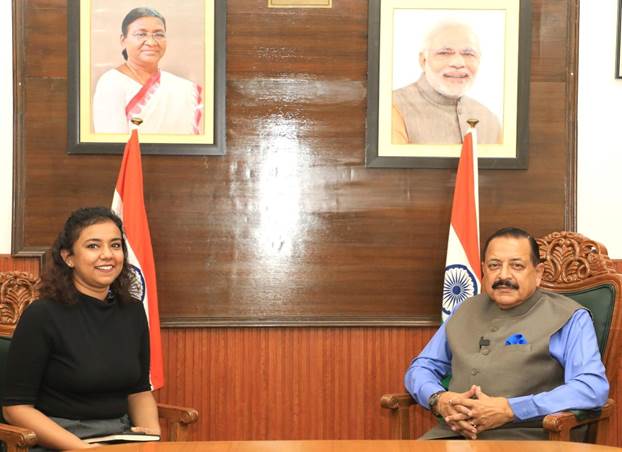
One of the key highlights of Dr. Jitendra Singh’s interaction was the announcement of a ₹1,000 crore venture capital fund dedicated to the space sector. Approved by the cabinet, this fund is part of a broader strategy to leverage India’s expanding base of nearly 300 space startups. In just a few years, India has witnessed a remarkable transformation in its space ecosystem, following the government’s decision to open the sector to private players. According to Dr. Jitendra Singh, this move has unlocked India’s potential, growing from a single-digit startup presence to an ecosystem with hundreds of space tech companies today.
“India’s space economy will play a critical role in our country’s growth,” Dr. Jitendra Singh noted, referencing the global recognition India has garnered from achievements like the Chandrayaan-3 mission. He further highlighted the Gaganyaan mission, India’s first human-crewed space mission, which will include a female robot test flight as a final dress rehearsal before sending human astronauts into space. “Our advancements are not just about joining the ranks of other spacefaring nations, but also about leading with innovation, precision, and reliability,” he added.
With the Bio E3 policy, Dr. Jitendra Singh emphasized a vision for a “bio-driven” future, asserting that the next industrial revolution will stem from bioeconomy initiatives rather than traditional manufacturing. The policy, which covers Biotechnology for Environment, Economy, and Employment, aims to create self-sufficiency in resources while reducing dependency on imports. A key objective, he explained, is the shift from petroleum-based resources to biofuel alternatives, enabling waste-to-fuel transformations and other sustainable practices.
“Our natural resources, including rich bioresources along the Himalayas and a 7,500-kilometre coastline, position us uniquely to drive this revolution,” Dr. Jitendra Singh said. “We’re tapping into the biotechnology potential of the regions, ensuring economic growth that is both inclusive and environmentally sustainable.”
Dr. Jitendra Singh also announced significant updates on Mission Mausam, an initiative launched within the first 100 days of Modi’s third term, aimed at enhancing the accuracy of meteorological forecasts. The mission, which integrates space and IT technologies, allows India to provide real-time, actionable weather forecasts, not only for India but also for neighboring countries, including Bangladesh, Nepal, and Sri Lanka.
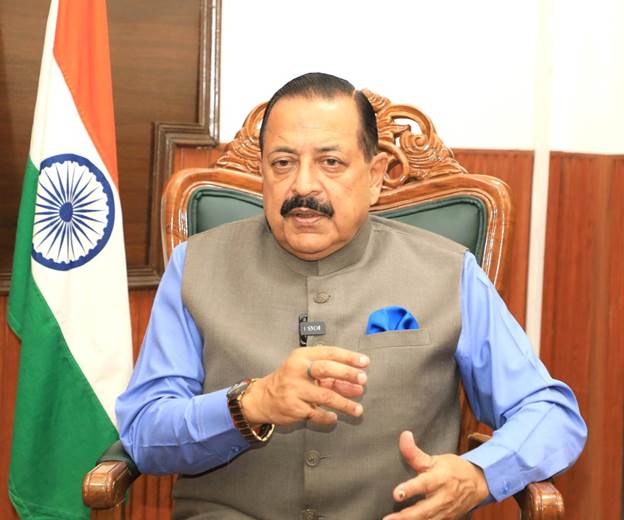
Reflecting on India’s legacy in meteorology, Dr. Jitendra Singh acknowledged that the sector has historically struggled to receive adequate investment. “Now, we’re not just forecasting the weather. We’re helping citizens understand the implications of weather events and prepare accordingly,” he said. New AI-driven applications will enable hyper-local, hour-by-hour forecasts for farmers and other stakeholders who rely on accurate predictions. “Our aim is to deliver global-standard forecasts and move towards predictive models that empower our agricultural sector,” Dr. Jitendra Singh emphasized.
A cornerstone of India’s approach under Prime Minister Modi, Dr. Jitendra Singh noted, is an all-encompassing strategy where scientific disciplines converge to produce more impactful outcomes. He highlighted that such collaboration is essential to achieving India’s broader developmental goals, with the science and tech sectors working cohesively to drive transformative results.
Dr. Jitendra Singh pointed to the India-Germany science partnership as an example of this holistic vision. Germany, hosting over 50,000 Indian students and researchers, has become a preferred destination for Indian scholars pursuing innovative projects. “Germany and India’s collaboration, particularly in areas like biotechnology and renewable energy, underscores the importance of international partnerships in realizing our scientific ambitions,” he said.
Dr. Jitendra Singh concluded by emphasizing that the government’s science and technology initiatives are rooted in a commitment to self-reliance and global leadership. By strategically investing in space and biotechnology, India is not only fostering economic growth but also aligning with the sustainable goals needed to tackle future challenges. These policies, he asserted, reflect the country’s ambition to lead in domains that impact both economic resilience and public well-being.
India’s journey toward a self-reliant, scientifically advanced future is being mapped with each new policy, fund, and partnership, Dr. Jitendra Singh affirmed. “Our goal is to make science work for India – to solve our challenges, drive our economy, and ensure that our citizens benefit directly from every innovation and breakthrough we make
Viksit Bharat: A Vision for a Developed India
In the contemporary landscape of global development, India stands at a pivotal juncture, poised to emerge as a significant player on the world stage. The concept of “Viksit Bharat,” or Developed India, encapsulates the aspirations of a nation eager to transcend its historical limitations and harness its intrinsic potential. This vision seeks to create an India that is not only economically robust but also socially equitable, technologically advanced, and environmentally sustainable.
Historical Context
India’s journey towards development has been both tumultuous and inspiring. Post-independence, the nation adopted a mixed economy model, balancing the scales between public and private sectors. Despite significant strides in various sectors, including technology and services, the country has grappled with challenges related to poverty, inequality, and infrastructure deficits. The term “Viksit Bharat” has gained traction in recent years, primarily as a response to these challenges, envisioning a nation that thrives on innovation and inclusivity.
Economic Growth and Sustainability
At the heart of Viksit Bharat lies a commitment to sustainable economic growth. India’s economy has witnessed remarkable growth in the past few decades, fueled by reforms, liberalization, and globalization. However, this growth must be inclusive to ensure that it benefits all sections of society. The government, in collaboration with various stakeholders, is working towards policies that promote entrepreneurship, enhance skill development, and foster innovation.
The emphasis on sustainability is paramount in this vision. India faces significant environmental challenges, from air and water pollution to climate change. A Developed India must prioritize green technologies and sustainable practices. Initiatives such as the National Action Plan on Climate Change (NAPCC) and the promotion of renewable energy sources underscore the commitment to an environmentally sustainable growth model. The goal is not just to increase GDP but to improve the overall quality of life for all citizens.
Social Equity and Inclusivity
A truly developed nation is one that ensures social equity. Viksit Bharat aims to bridge the gaps of inequality that have long plagued Indian society. This entails improving access to education, healthcare, and employment opportunities for marginalized communities. The government’s push towards initiatives like the Skill India Mission and the Beti Bachao, Beti Padhao campaign highlights the commitment to uplift the disadvantaged segments of society.
Moreover, social equity is not just a matter of economic upliftment;it is also about fostering a sense of belonging and ensuring that every citizen has a stake in the nation’s progress. Empowering women, promoting minority rights, and ensuring the rights of the disabled are integral components of the vision for Viksit Bharat. By cultivating an inclusive culture, India can harness the potential of its diverse population, leading to innovation and growth.
Technological Advancements
In the age of digital transformation, technology plays a crucial role in achieving the goals set forth by Viksit Bharat. India has made significant advancements in areas such as information technology, telecommunications, and digital infrastructure. The Digital India initiative aims to empower citizens through digital literacy and access to information, thereby bridging the urban-rural divide.
Promoting technological innovation is essential for enhancing productivity and efficiency across various sectors. Startups and the burgeoning tech ecosystem in India are testament to the country’s potential for innovation. The government has introduced several policies to support these endeavors, including the Startup India initiative which aims to foster a culture of entrepreneurship.
Infrastructure Development
Infrastructure is the backbone of any developed nation. For Viksit Bharat, extensive investment in infrastructure development is crucial. This encompasses not only transportation and logistics but also urban development, housing, and smart city initiatives. The government’s focus on the Gati Shakti National Master Plan aims to create a holistic approach to infrastructure planning and development, ensuring seamless connectivity and efficiency.
By investing in robust infrastructure, India can create a conducive environment for businesses to thrive, improve the quality of life for its citizens, and facilitate faster economic growth.
Conclusion
The journey towards Viksit Bharat is both ambitious and essential. It requires a collective effort from the government, private sector, civil society, and citizens alike. By focusing on sustainable development, social equity, technological innovation, and robust infrastructure, India can realize its vision of becoming a developed nation.
This transformative journey is not merely an economic endeavor; it is about fostering a sense of pride and belonging among all Indians. As the nation navigates through the complexities of modernization and globalization, the commitment to building a Viksit Bharat must remain steadfast, ensuring that progress is inclusive and sustainable for generations to come.
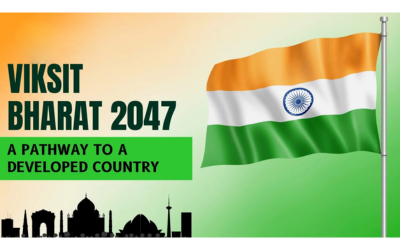
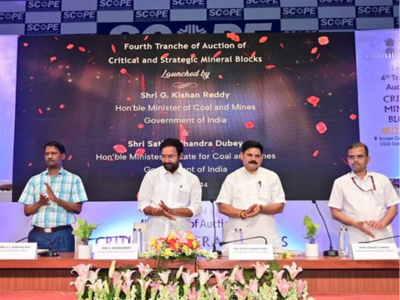

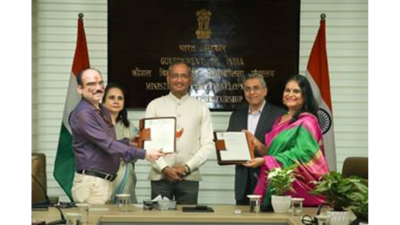
One thought on “Realising Viksit Bharat: The Role of the Modi 3.0 Science Push in National Development”